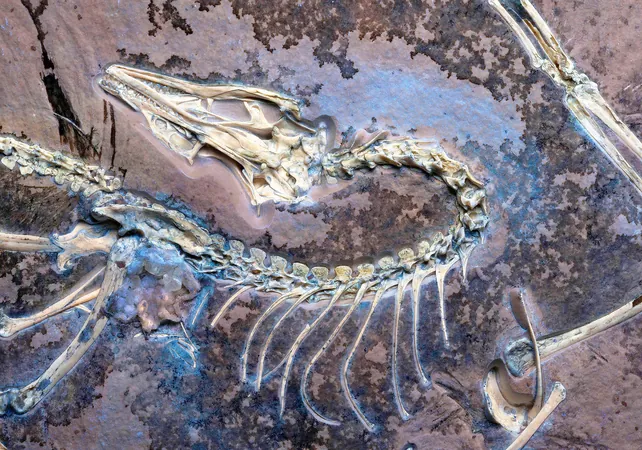
Unveiling the Secret of Flight: Archaeopteryx Fossil Breakthrough Confirms Darwin's Theory!
2025-05-26
Author: Ting
A Groundbreaking Discovery in Paleontology
Archaeopteryx, a pivotal fossil linking modern birds to their dinosaur ancestors, has long been hailed as evidence supporting Darwin's theory of evolution. Now, a recently studied specimen, deemed the "Chicago Archaeopteryx," is shedding new light on how birds truly came to fly, proving that this ancient creature still has secrets to reveal.
A Stunning Specimen from the Past
Discovered in the renowned Solnhofen limestone of Germany, this tiny yet remarkable fossil—only the size of a pigeon—has been in private custody for decades before being brought to the Field Museum in 2022 thanks to fossil enthusiasts. Paleontologist Jingmai O'Connor, a key figure in this study, expressed her excitement upon its arrival, stating that the meticulous preservation and preparation has yielded incredible new insights.
Unraveling the Mysteries of Preparation
The process of preparing the Chicago Archaeopteryx was nothing short of meticulous. With bones and soft tissues sharing a nearly indistinguishable color from the surrounding rock, paleontologists faced a daunting challenge. Using cutting-edge CT scans and UV light, they navigated the delicate process, ensuring the preservation of every valuable detail. This marks the first time a complete Archaeopteryx has been CT scanned and made publicly accessible.
Details Never Seen Before
Thanks to advanced techniques and extraordinary preservation, this fossil reveals unprecedented details about its anatomy, including the structure of its skull, hands, and wings. O'Connor highlighted the importance of cranial kinesis, a fascinating evolutionary feature allowing birds to move their beaks independently from their skulls—a vital adaptation for surviving in diverse ecological niches.
The Evolution of Flight: A New Perspective
Archaeopteryx is at the heart of debates surrounding the evolution of flight in dinosaurs. While it was not the first feathered dinosaur, it stands out as the earliest known creature capable of true flight. O'Connor points out that its elongated upper arm bones and unique feather structures played a key role in its aerial capabilities, contrasting sharply with modern birds' adaptations.
Unearthing the Future of Bird Evolution
The discovery of long tertial feathers in the Chicago specimen—previously unseen in its flightless relatives—provides compelling evidence that Archaeopteryx could indeed fly, suggesting that the evolution of flight may have occurred multiple times within the dinosaur lineage.
What Lies Ahead?
Even after 160 years of study, Archaeopteryx continues to unravel new mysteries about avian evolution. As researchers delve deeper into this specimen, they are uncovering exciting revelations that challenge long-held beliefs. O'Connor notes that these findings represent just the "tip of the iceberg," with much more to learn in future studies.
Conclusion: The Legacy of Archaeopteryx Lives On
Thanks to cutting-edge technology and meticulous preparation, the Chicago Archaeopteryx reignites interest in one of paleontology's most iconic fossils. This discovery not only enhances our understanding of bird evolution but also reinforces the ongoing relevance of Darwin's groundbreaking theories.



 Brasil (PT)
Brasil (PT)
 Canada (EN)
Canada (EN)
 Chile (ES)
Chile (ES)
 Česko (CS)
Česko (CS)
 대한민국 (KO)
대한민국 (KO)
 España (ES)
España (ES)
 France (FR)
France (FR)
 Hong Kong (EN)
Hong Kong (EN)
 Italia (IT)
Italia (IT)
 日本 (JA)
日本 (JA)
 Magyarország (HU)
Magyarország (HU)
 Norge (NO)
Norge (NO)
 Polska (PL)
Polska (PL)
 Schweiz (DE)
Schweiz (DE)
 Singapore (EN)
Singapore (EN)
 Sverige (SV)
Sverige (SV)
 Suomi (FI)
Suomi (FI)
 Türkiye (TR)
Türkiye (TR)
 الإمارات العربية المتحدة (AR)
الإمارات العربية المتحدة (AR)